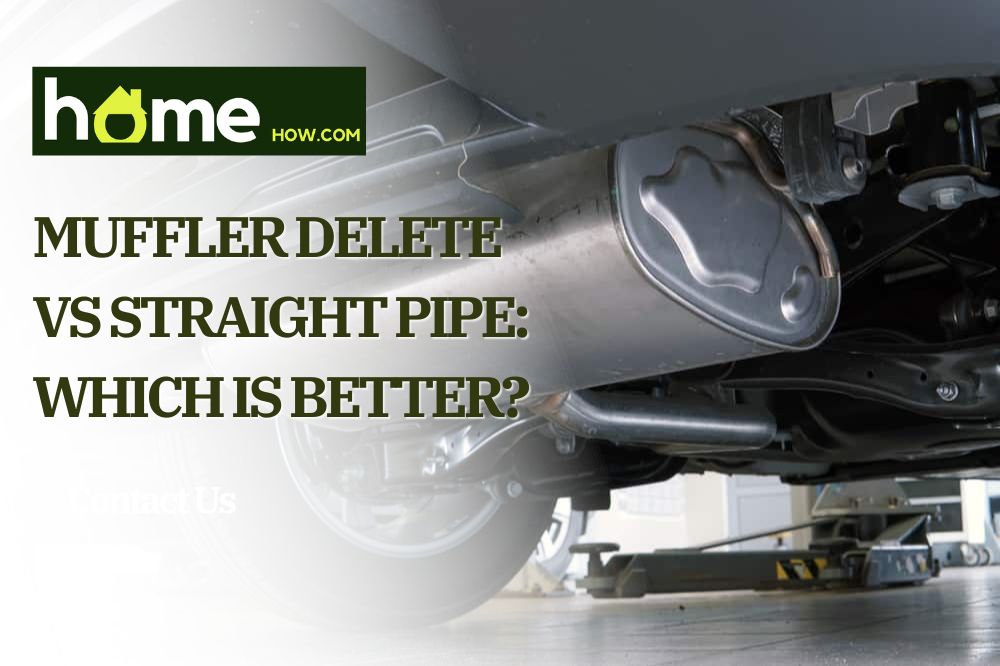Like most car enthusiasts, you may be thinking of changing your vehicle’s exhaust system and making it louder. Currently, the two most popular options to choose from are the muffler delete and straight pipe.
So what’s the difference between these two? Furthermore, which is better for your car?
The good news is I have all the answers to your questions below so you can decide. Let’s begin!
Muffler Delete
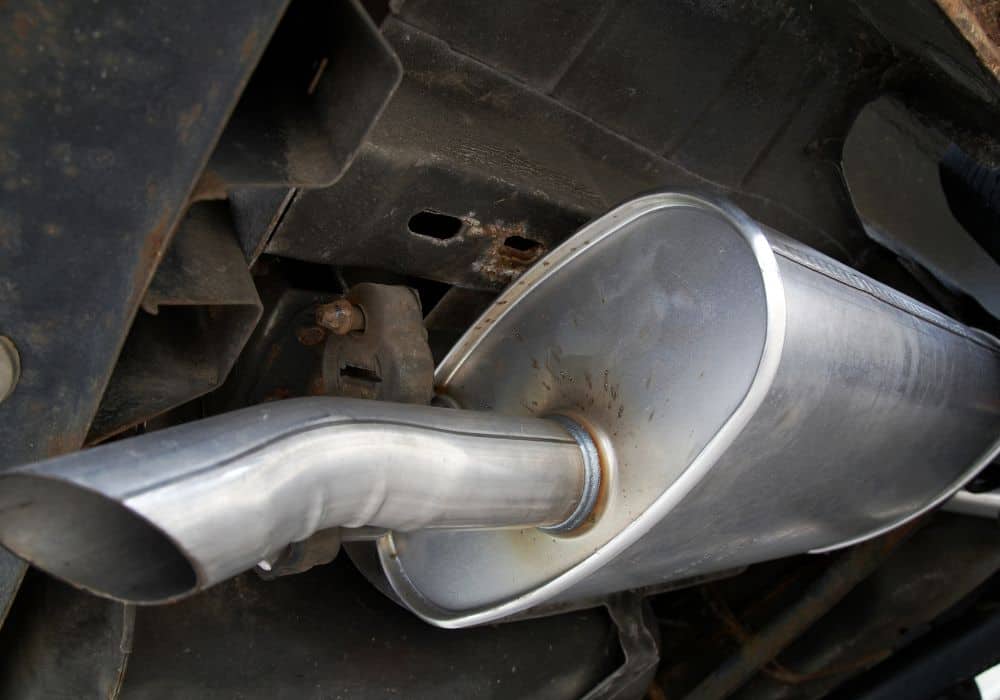
The term speaks for itself. It is the process of muffler removal (granted your car has one) and using a steel pipe instead.
See, the muffler works by causing backpressure and limiting the expulsion of gases. Therefore, you can ‘enhance’ the exhaust sound by deleting the muffler since nothing prevents the free flow of gases.
Since the muffler only works to limit exhaust noise, your car will still function even if you remove it from your system. Furthermore, a muffler delete won’t affect/damage your engine.
More than just improving sound, a muffler delete may boost car performance too. Since a colossal component will be removed, the vehicle’s weight will be reduced. As a result, the car’s torque will be improved.
Although most cars with mufflers can have this modification, it is often done in modern muscle and sports cars.
Straight Pipe Exhaust System
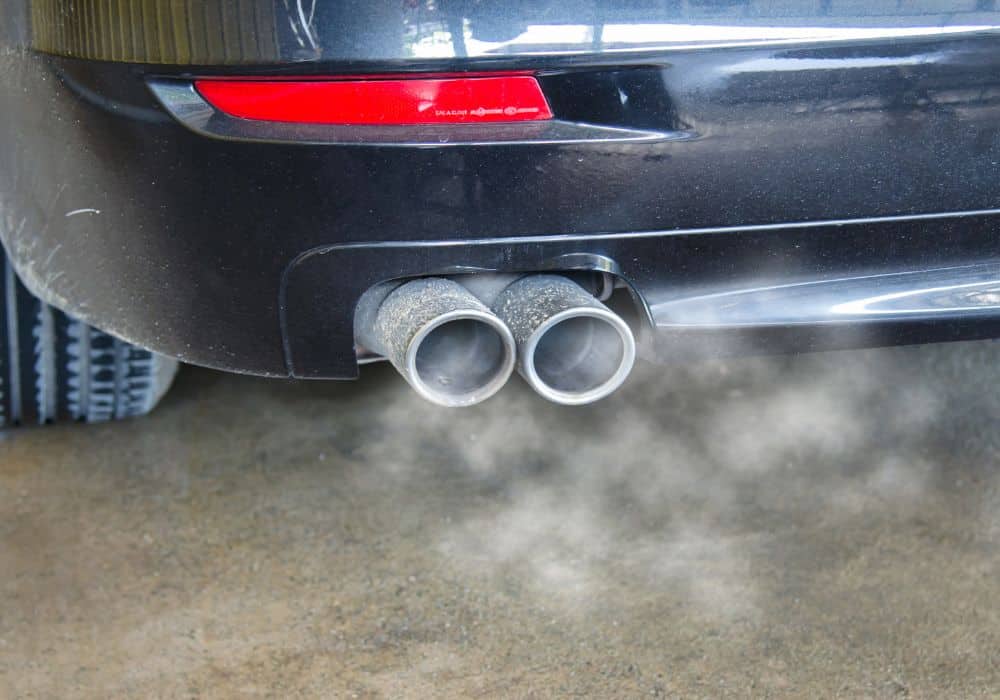
This type of exhaust pipe starts at the headers, thus allowing the exhaust fumes to exit right at the tip.
A straight pipe works to replace the muffler, resonator, and catalytic converter so all the noises that the vehicle produces will be heard.
Like a muffler delete, a straight pipe can improve performance by making your vehicle lighter. That’s why apart from removing the components mentioned above, race car drivers remove everything else (seats, fixtures, etc.) that will make the car heavier.
Despite the pervasive beliefs, ‘longer is not always better with straight pipes. In fact, the lengthier the tube is, the likelier it’ll produce annoying crackling and popping sounds.
Similar to muffler deletion, most cars can be straight-piped. However, this modification is best performed in trucks and SUVs.
Muffler Delete vs. Straight Pipe: a Comparison
It’s challenging to determine which one is better if you don’t see how they differ from each other. So before we pinpoint the best modification for your car, let’s compare the two options first.
1. Vehicle Noise Enhancement
Whether you want to make a newer vehicle or an older one sound louder, know that both options can do so.
That’s where the difference ends, though.
Both will only make your car sound louder, but not necessarily better. You will still need to install an aftermarket muffler or exhaust device in your car to achieve this result.
2. Back Pressure
This term refers to the air pressure produced in the exhaust chambers. Needless to say, the lesser the exhaust backpressure, the better the vehicle’s performance.
Again, both can significantly reduce the back pressure in your engine system.
A muffler delete does this by allowing the free flow of gases. Straight pipes, on the other hand, make this possible due to the removal of constraints on the muffler, catalytic converter, and resonator.
Granted that the latter eliminates more parts, it can reduce back pressure better than a muffler delete.
3. Exhaust Velocity
On the other hand, this term refers to the speed at which exhaust gases flow. It’s technically the opposite of back pressure, for the mantra ‘the higher, the better’ applies to exhaust velocity.
However, the only way to increase exhaust velocity is to narrow the exhaust pipes. Since neither a straight pipe nor a muffler delete won’t achieve this outcome, both these modifications won’t improve your car’s exhaust velocity.
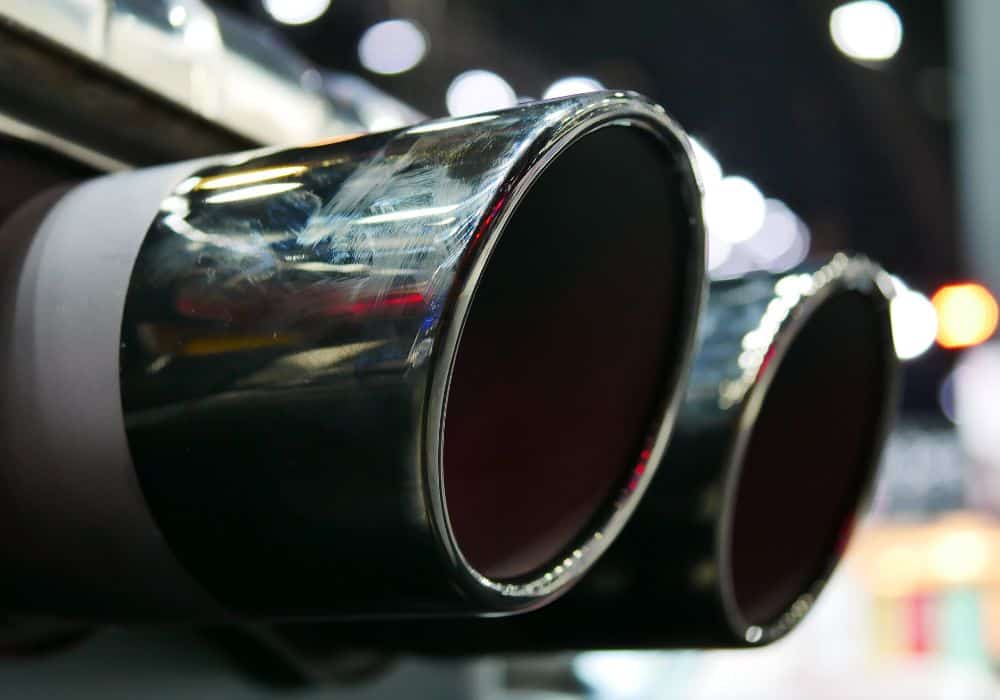
4. Horsepower
Both exhaust systems can give your vehicle a hefty horsepower gain.
That said, a straight pipe can provide more torque (about ten hp) because of the removal of the catalytic converter.
Speed notwithstanding, one of the disadvantages of straight pipes is you’ll need meticulous work (car tuning and fuel injection modification) to attain this increased horsepower. Consequently, the car will require more care and monitoring because of all the enhancements.
So while a muffler deletion will only add half the power gain – five hp – it doesn’t require many changes. The additional torque won’t feel much in a newer car, but it can especially strike a difference for older vehicles aged 20 years and above.
5. Tuning
As mentioned, fitting a car with straight pipes entails more work.
First and foremost, they require Electronic Control Unit (ECU) changes, which isn’t necessary for a muffler delete. In fact, it’s pointless to have a muffler-deleted car tuned.
Tuning the ECU for straight-piped cars, however, is a necessary process. This allows you to disable the check engine light (CEL) and adjust the air/fuel ratio. These modifications, after all, are essential to give your vehicle the additional ten-hp torque.
In case you want to make more modifications to your straight pipe car, it’s possible. You can always pay a pro to adjust your rev limiter/top speed – even your engine torque map.
Take note: driving your straight-piped car without tuning it up is possible. The downside to this is it will make your car run lean. In the long run, this can damage your vehicle.
6. Weight Reduction
The ‘lighter’ the vehicle is, the better its efficiency. Again, both options significantly reduce weight by 25-50 pounds.
For one, a muffler delete involves the removal of the catalytic converter, a component that makes the car heavier.
Furthermore, a straight pipe can make your car even lighter because of the catalytic converter and resonator delete. This is one of the reasons why this is popular among car enthusiasts, for this change means the car will perform better.
7. Cost
The muffler delete cost is cheaper than having a straight pipe installed. You will only need to pay $50 to $250 for components.
As for the labor, you can easily do it on your own. For example, you must remove the part and weld the replacement pipe to delete your muffle.
Although a DIY muffler delete is doable, it’s risky if you do not know what you’re doing. If your welding work is faulty, your car may suffer from damaging corrosion and exhaust leaks.
So if you want to prevent this from happening, it’s best to pay a professional mechanic. This may cost you an additional $100 to $200, but you don’t have to worry about further damages.
Given that having your muffler deleted will cost you some money, it is a far cry from the fees that go with installing straight pipes. It can range anywhere from $1000 to $1500, though you may have to pay higher.
The higher cost of installing a straight pipe is mainly due to the labor involved. That’s because the muffler, resonator, and catalytic converter need to be removed before the straight pipe can be installed.
On top of that, you will need to pay more if you want your car fitted with titanium alloy exhausts.
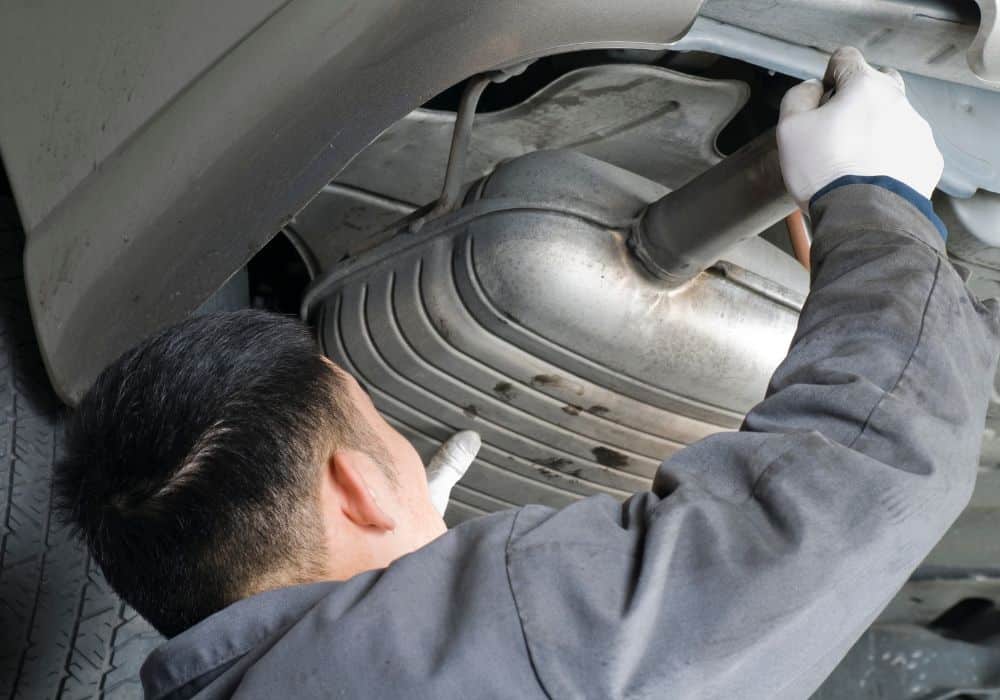
8. Legal Ramifications
While it’s great to have your muffler deleted or a straight pipe installed in your car, these modifications do come with legal ramifications.
Ordinary cars, for example, are prohibited from undergoing these improvements. For instance, your vehicle must meet a certain decibel level in California to be considered roadworthy. Here, a cop may give you a ticket if they see you driving a modified car on a public road.
Despite this, several street car owners opt to have their mufflers deleted. This modification still leaves the resonator intact, which means it meets the state regulation on ‘having at least one sound suppressor in the car.’
That said, your muffler-deleted car still needs to meet the allowable decibel level.
Since putting a straight pipe can make your car very noisy, it’s only recommended for race cars. In addition, the absence of the catalytic converter allows the production of heavy fumes harmful to both the driver and the onlookers.
In a nutshell, straight pipe cars are illegal on the streets because they don’t meet sound regulations. Moreso, they surely won’t pass the emissions tests.
9. Gas Mileage
Sadly, both modifications won’t help improve gas mileage. If any, your car may use more gas along the way.
Why? You’ll probably be more tempted to rev your automobile due to its enhanced sound.
Who could blame you?
Conclusion: Which is Better – Muffler Delete or Straight Pipe?
Based on the abovementioned factors, the better option will depend on your needs/wants.
If you’re using a street car, you’re probably better off with a muffler delete. It will make your vehicle sound better. It will also add some torque, especially for older cars.
The cost of a muffler delete is cheaper too. And, depending on where you live – and the sound your car makes – you may use it on a public road.
On the other hand, having a straight pipe is perfect if you’re a race car driver or a dedicated car enthusiast. It will add more torque at ten hp – and make your vehicle sound amazing.
In a nutshell, only you can decide the best modification that suits your car.
